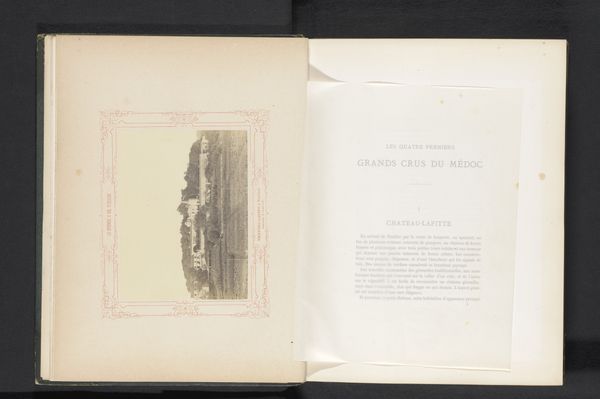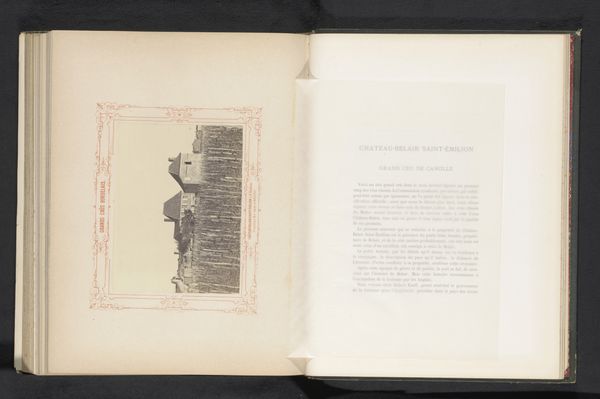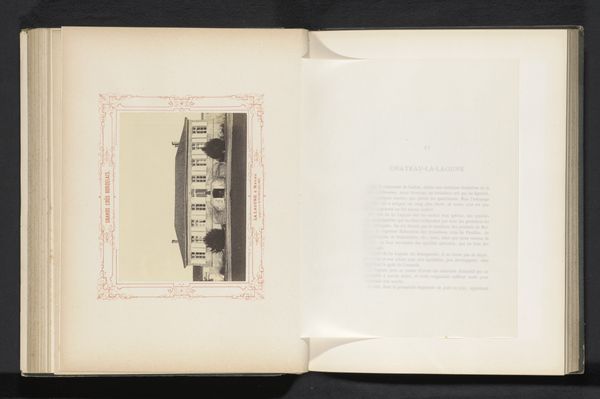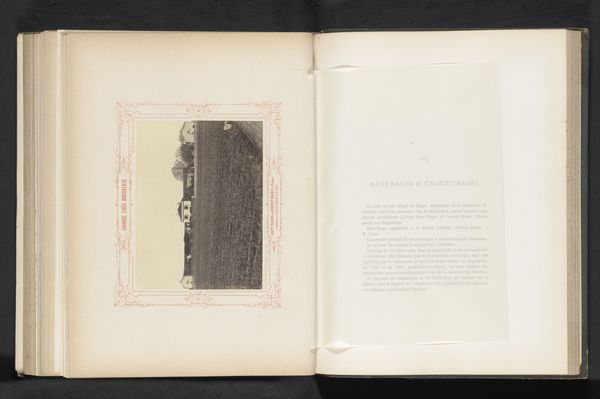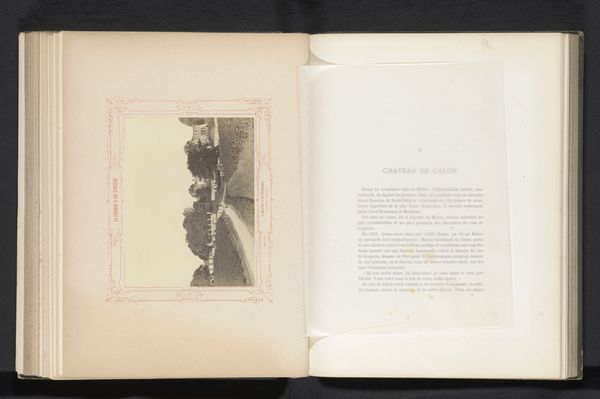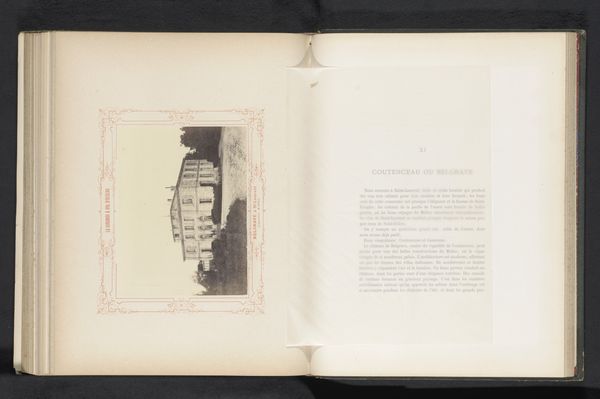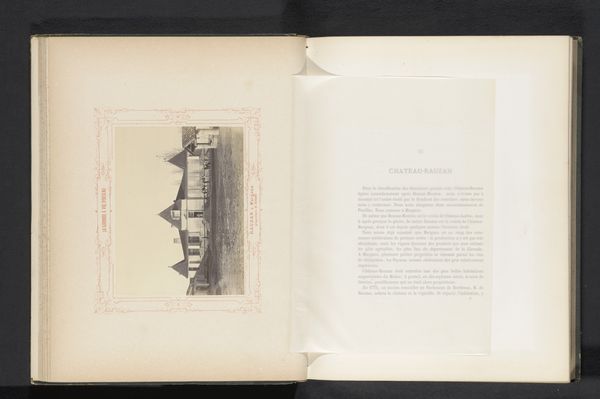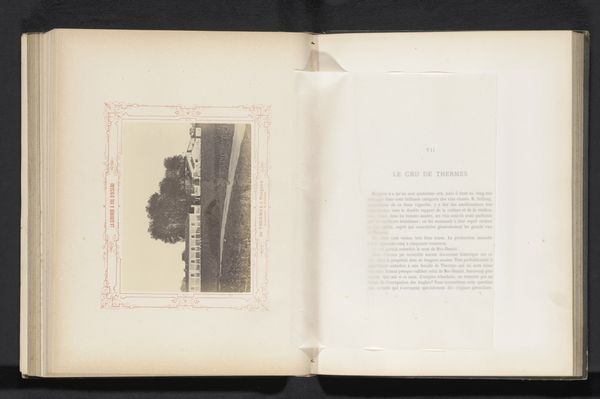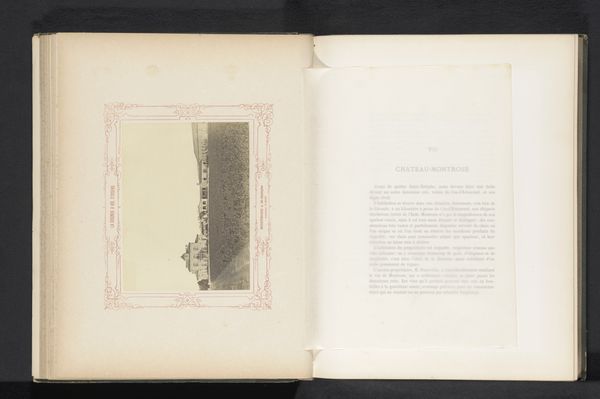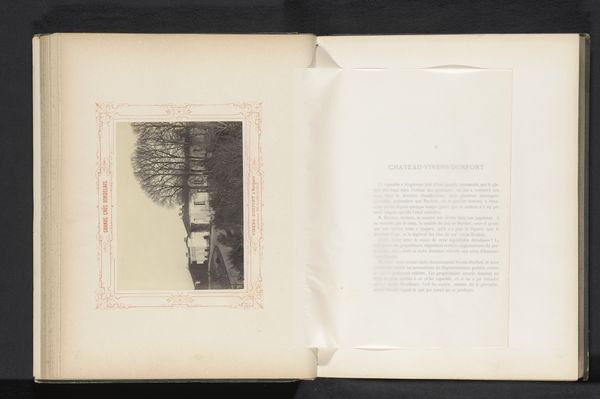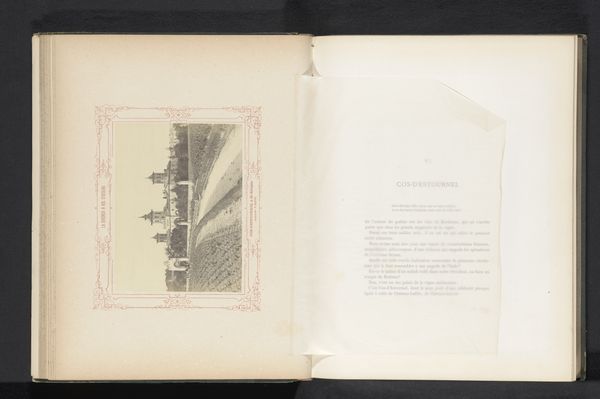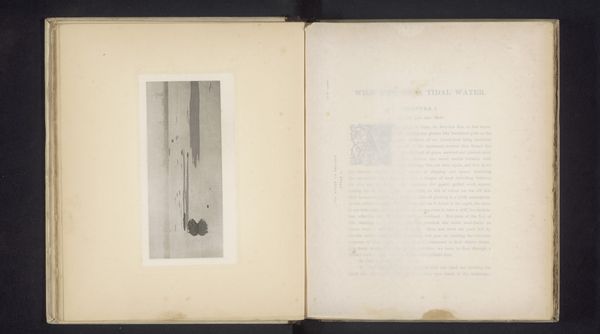
print, photography, albumen-print, architecture
# print
#
landscape
#
photography
#
albumen-print
#
architecture
#
realism
Dimensions: height 130 mm, width 171 mm
Copyright: Rijks Museum: Open Domain
Curator: Here we have an image titled "Gezicht op Château Mouton-Rothschild in Pauillac, Frankrijk", taken by Alfred Danflou, sometime before 1867. It's an albumen print, carefully preserved within an album. Editor: My first thought is how still and serene it feels. The vertical composition and the stark contrast of light and shadow almost create a sense of timelessness, like a stage set awaiting its players. Curator: Indeed. Danflou’s choice of the albumen process gives the image a subtle warmth, a kind of nostalgic filter even for its contemporary audience. Note how the building almost rises as an emblem of industry among nature, suggesting control and authority. Editor: Right, the photograph certainly participates in a visual narrative of power, where architecture becomes a symbol of social and economic dominance. Chateau Mouton-Rothschild isn't merely a building but a landmark of wealth in this period. How do we contextualize its production in the wake of emerging class structures and their impact in rural regions? Curator: The precision and realism achieved with photography here contribute to a broader understanding of 19th-century material culture and progress. Buildings represented advancement; symbols of innovation and national pride were considered quite literally ‘building blocks’ for success. Editor: It’s fascinating how these landscape images simultaneously glorify progress and subtly mask potential exploitation, reinforcing existing power structures. This depiction of Mouton-Rothschild encourages admiration for architectural grandeur. Did Danflou address, intentionally or otherwise, its broader socioeconomic ramifications at the time? Curator: It prompts us to explore symbols within their particular period and reflect on visual motifs, cultural beliefs and progress. The enduring imagery holds cultural weight through this landscape; its very preservation signifies cultural endurance, in itself a point for observation. Editor: Looking at it now I’m increasingly struck by the picture’s power and capacity to ignite such layered discourse regarding historical, socioeconomic and aesthetic contexts – I’m appreciative for a richer, more thorough contemplation of the artwork’s visual and narrative dynamics.
Comments
No comments
Be the first to comment and join the conversation on the ultimate creative platform.
